No salt fertilizers: alfalfa, almond, corn, molasses, Brewer's yeast
strawchicago z5
8 years ago
last modified: 8 years ago
Featured Answer
Sort by:Oldest
Comments (16)
strawchicago z5
8 years agolast modified: 8 years agoRelated Discussions
molasses and compost tea
Comments (20)Even among the experts there is a lot of debate on some of these things. The 'best' molasses - often called blackstrap, is the residue left after the third boiling to extract the refined sugar. It has a lot of trace minerals and many different types of complex sugars in it. Manganese, magnesium, iron, phosphorous, calcium.... all sorts of nice stuff that is left after the simple sugar is removed for processing. As a disclaimer, I am NOT a recognized expert on the complex biology of aerated compost teas but I have some knowledge when it comes to aquatic systems after many years as a semi-pro fish breeding hobbyist. There are certain types of very sensitive fish from the soft, acidic waters of the amazon region and others from the hard water african rift valleys who need specific chemistries and that stuff I know cold. Back to compost teas and molasses.... I've read volumes from the acknowledged experts regarding the ratio of fungi to bacteria to microbes over time at different oxygen levels and I get that stuff but I have to reject some of the stuff that is written because it is VASTLY over-generalized. The notion that dissolved O2, sugar level and temperature are the only factors is just silly. PH matters. Trace elements can be a limiting factor and the system is constantly in flux. If you pull a beaker of your brew and run it to your lab and then spend two hours analyzing it then the brew you come back to a couple hours later has changed dramatically. Let's look at a simple example - the same experts who say that they are doing a detailed analysis say that certain organisms are doubling in number every 20 minutes. So if their sample has 16 representatives of 2 different organisms when they pull the sample then 2 hours later one of them may have doubled in number 6 times. 32 64 128 256 512 1024... so one or both of those 'critters' may be 64 times more concentrated than the analysis says or it may be wiped out because there is a bloom and crash cycle going on all the time. When one critter is multiplying exponentially it is not forever - eventually it hits a wall - all the food is gone, the O2 is used up or some trace mineral it needs is used up or the metabolism/excretion of the food has caused a massive shift in PH that makes another critter more suited to the environment and it is taking off as the first critter population crashes... and then some other critter starts feasting and doubling off the corpses of all the bacteria that just died off. How does that work in aquaculture? Well, in a closed system you use bacteria to purify the water for the fish and inverts - a 100 gallon tank is tiny and chemistry changes very quickly compared to say an ocean, right? Fish peeing and pooping causes ammonia to spike and ammonia burns a fish's gills when PH is above 7 and everything crashes and your fishies die. They call that new tank syndrome. It takes a few weeks for even an expert to get the bacteria right because there is one type of bacteria that breaks poop down into ammonia, another that converts the ammonia to nitrite (also poisonous) and another that breaks the nitirite into Nitrate which feeds plants in the tank or is removed by water changes or by slow filtering the water through an anaerobic filter populated by the anaerobes that can break down the nitrate and leave you with clean water... I know this is wayyyyyyyy more info than anyone probably wants but let me finally get to my point: The beauty of a natural system is that it will eventually balance out. If your tea goes anaerobic because some critter is using all the oxygen up and anaerobes start multiplying then what happens when the aerobic organisms crash? Well, oxygen levels start going back up and the anaerobes that cannot tolerate O2 levels above a certain level begin to crash and they are eaten by some other aerobic critter. If you brew a tea that gets way too acidic or ferments into alcohol I can see it having a negative impact on plants that don't like that but once out of the brewer and into the soil any imbalance is going to self-correct. I'm just starting to play with aerated teas and the results have been quite interesting and very positive. When I brew it up I am running two batches at once in separate containers. I start with a mix of well aged cow manure compost and a few pounds of nice, fungus rich broken down mulch and soil from under the bushes where there are lots of worms and such. I mix that up with dechlorinated water and stir it up several times then strain it with a mesh just fine enough to prevent my sprayer from clogging into two 5 gallon buckets as a starter then fill it the rest of the way with water. One gets a few ounces of horticultural molasses, the other gets whatever i find interesting that day - banana peels, some leftover oatmeal, the dregs of my wheatgrass, berry, protein, flax, chia smoothie I could not choke down despite the health benefits.... non sugary stuff.... I'll brew for a day, use up half the liquid in each one in the sprayer before or during a rain and then fill the buckets back up to replace the water and let them run for another day or two without adding anything and do it again and sometimes a third time. Replacing the water will dilute anything that has gotten too concentrated and I am sure that the biology of the 24, 48 and 72 hour brews in each bucket are quite different. I aerate them well but I don't bother measuring because I just don't buy into the idea that what's ideal for one area of the property or type of plant is ideal for all and I know for certain that 'ideal' a fallacy within any biological system that is undergoing rapid bloom/bust cycles. Once I spray it, the tea microbes are in a completely different environment and will undergo lots of changes very rapidly but the soil is going to develop a proper balance and figure the rest out on it's own. Still reading? OK, so the point is that one way or another I managed to get all those nice trace minerals to my plants in a form they can use and if I am a little early or a little late then so what? I think if you ask ANY of the experts they would tell you that the biology of their tea when analyzed is different than it is if you spray it a few hours later. I also think they would tell you that it is hubris to even imagine that we can dial it in exactly but that is the beauty of using compost and the aerated teas - you don't need to get it right and you can't get it perfect but if you are somewhere in the right general zip code then the incredibly complex and only partially understood processes that have evolved over billions of years will take over and fix your mistakes. ...have been in current property for a year. When we moved in the property had been under the management of a service for several years, Weed sprays, insect sprays, fertilizer sprays... compacted, little evidence of worms. Now? Worms in abundance, neighbors hate my guts because they can't figure out how I get the Bermuda so dark green and lush and the beds and baskets are overflowing. Due to back surgery last year I can't spread truckloads of compost or turn a pile easily but I can make an aerated tea and I generate about a gallon of pee every day and you could putt on the lawn because I am one of those weenies who likes the bermuda at 3/8" and gets the dremel out to sharpen the blade every time I cut so that the clippings are tiny and break down into the tea-pee'd soil instantly :-) Don't overthink it to the point of stressing out. It makes sense that you don't want to brew a tea full of salmonella or e coli by brewing up a batch of poop in the sun without aeration but otherwise it's kinda hard to go too far wrong with compost and/or teas with or without molasses because if you jack it up? Hakuna Matata baby - that whole circle of life kicks in and fixes your mistakes. Whether in tea or just mixed with water and sprayed on the turf, Molasses seems to have a huge impact on a lawn within a couple weeks. When plants are short on nitrogen they can excrete some sugar into the soil around their roots - what's that do? well the bacteria metabolize the sugar and they poop and die and release nitrogen. If you get 'too many' sugar bacteria into the soil and they fix too much nitrogen on Monday they will run out of food and die off on tuesday and become fertilizer for plants and food for other microbes. Nature figures stuff out so long as you hand it stuff that it made in the first place....See MoreCorn Meal?
Comments (32)When last I looked, this was the "Soil, Compost, and Mulch" forum. As with each forum on GardenWeb the purpose of this forum is as follows: "This forum is for the discussion of all aspects of soil--including topics like creating a healthy, balanced soil, methods of composting and using mulches effectively." There is no mention of organics or anything related to organic gardening. Thus, those who choose to use synthetic fertilizers, GM seed, or any other form of synthetic chemicals are welcomed to post on this forum. While I may not agree with their gardening/farming practices, their techniques work just as well if not better when combined with soil, compost, or mulch. Those who use synthetics have offered many a good, informative, and if one has an open mind, different direction that could be taken to a given conversation on this forum. Their knowledge has always been much welcomed within the community, for their solutions can be "converted" into organic solutions if dogma is kept out of the conversation. Living in a farming community, I have no choice but to learn how to deal with people/farmers who use synthetics. Each year my compost tea brewer has to be cranked up to counteract some synthetic spray that has invaded my "airspace". Yet, each year more and more of these synthetic inclined neighbors make their way to my home to get a "lil-bit of that good smellin dirt that grows such good maters". Toleration of differences and insight into how to deal with those things that cant be controlled can and does allow for a very productive organic garden I create each year. Perfect it may not be, but satisfying to ones spirit it is to do ones best Blutranes...See MoreWhy alfalfa tea works better than alfalfa?
Comments (10)After researching, I find that alfalfa meal decomposes fast and gives off quick heat, more so than alfalfa pellets. I cooked a geranium to death by planting in a clay mixed with alfalfa meal. I did the same with 2 rhododendrons in hot and dry summer. Years ago we detached our lawn in late fall and stored bags of grass clippings in the garage .. the entire garage was heat up, despite 40 degrees outside. NPK of alfalfa pellets is 2-1-2 ($17.99 for 50 lbs. bag), NPK of soy bean meal is 7-2-1 ($20 for 50 lbs. bag), and NPK of crack corn is 1.65 / 0.65 / 0.4 ($2.69 for 10 lbs. bag) at feed store. NPK of alfalfa hay is 2.45 - 0.5 - 2.1, sold for $8 per bale at the feed store. Corn is alkaline, has anti-fungal property. Soybean meal is also alkaline. Alfalfa meal is slightly acidic and naturally high in sugar, great for fungal germination. See below discussion "Afalfa Meal Heating Up Soil" in Organic Gardening Forum: â¢Posted by mprevost 7 (My Page) on Sun, Jan 13, 08 Throughout that time I've used only bagged composted chicken manure, alfalfa meal, soybean meal, and various mulches (leaves, grass clippings) to fertilize my soil. I have not seen this heating up occur without significant concentrations of alfalfa meal. Without a lot of alfalfa meal, it does not heat up. But if you put a lot of alfalfa meal under mulch or in a hole, it gets REAL hot in a couple of days. Like as hot as a very hot compost pile. 150 deg F or so. " **** From Straw: I haven't tested soy bean meal, so I won't recommend that. I tested cracked corn (grinded smaller with NutriMill flour grinder) ... awesome result, shiny leaves & many buds. Birds like to eat that stuff. The growth can't compare to alfalfa meal, but I'm aiming for buds and health in hot summer, and not top growth. Alfalfa hay is $8 per bale, best to mix that in with dirt, since the hay is hard to decompose, plus matting-up, blocking water. Some info. from the lawn forum: â¢Posted by lee_in_iowa 4 to 5 on the lin (My Page) on Thu, Apr 14, 11 at 11:35 Boy, I can't recommend the soybean meal. Never again! I tilled it into the top 4-6 inches of my raised beds one year and it grew me a bumper crop of cutworms and armyworms. It attracted pests I had never had before. For myself, I like to ask for bales of alfalfa hay." Here is a link that might be useful: Reference link on Organic Fertilizers This post was edited by Strawberryhill on Mon, Sep 2, 13 at 10:02...See MorePossibly a new fertilizer?
Comments (16)In the wild animals will only eat alfalfa when there is no alternative. They eat it in captivity only when they have no alternative for fresh food. Papaya extract is a digestive aid enzyme. Jim W, if you look at the ingredients for most organic fertilizers you will see a list including corn, alfalfa, soybean, wheat, flax, cottonseed, and animal byproducts. The animal byproducts usually include feather meal, fish meal, hydrolyzed fish, poultry litter, and sometimes blood meal. If you'll notice these are all protein sources of one type or another. So we have, for the past 13 years, been using the raw materials directly from the feed store and saving a lot over the commercially bagged organic fertilizers. The application rate is 15 to 20 pounds per 1,000 square feet. The way these work is that the 100,000 or so species of microbes in the soil decompose the foodstuffs and then decompose each other until there is a byproduct called plant food. This process takes 3 weeks to occur. Once it does you should see results like this...This was taken by mrmumbles several years ago. It's a zoysia lawn fertilized with a handful of alfalfa pellets in mid May. The picture was taken in mid June the same year. You can see the improved color, density, and growth....See Morestrawchicago z5
8 years agolast modified: 8 years agostrawchicago z5
8 years agolast modified: 8 years agostrawchicago z5
8 years agolast modified: 8 years agostrawchicago z5
8 years agolast modified: 8 years agostrawchicago z5
8 years agolast modified: 8 years agostrawchicago z5
8 years agolast modified: 8 years agostrawchicago z5
8 years agolast modified: 8 years agostrawchicago z5
8 years agolast modified: 8 years agostrawchicago z5
8 years agolast modified: 8 years agostrawchicago z5
8 years agolast modified: 8 years agostrawchicago z5
8 years agolast modified: 8 years agostrawchicago z5
8 years agolast modified: 8 years agostrawchicago z5
8 years agolast modified: 8 years agostrawchicago z5
8 years ago
Sponsored
More Discussions





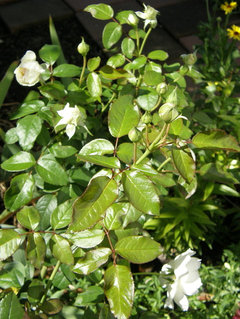
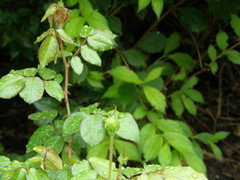

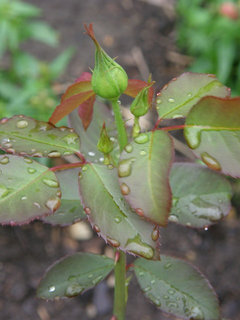
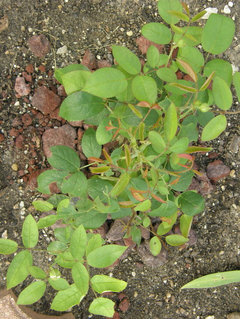
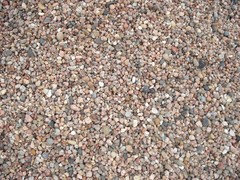
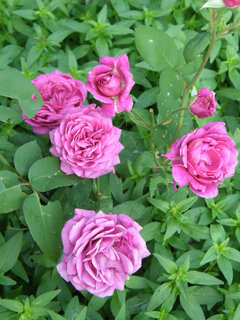
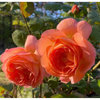

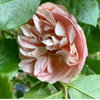
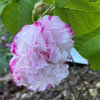
jim1961 / Central Pennsylvania / Zone 6